spaces into spaces
spaces into spaces
Vue d’installation du stand de Deutsche Bank Kunst à la Frieze Art Fair, 2005
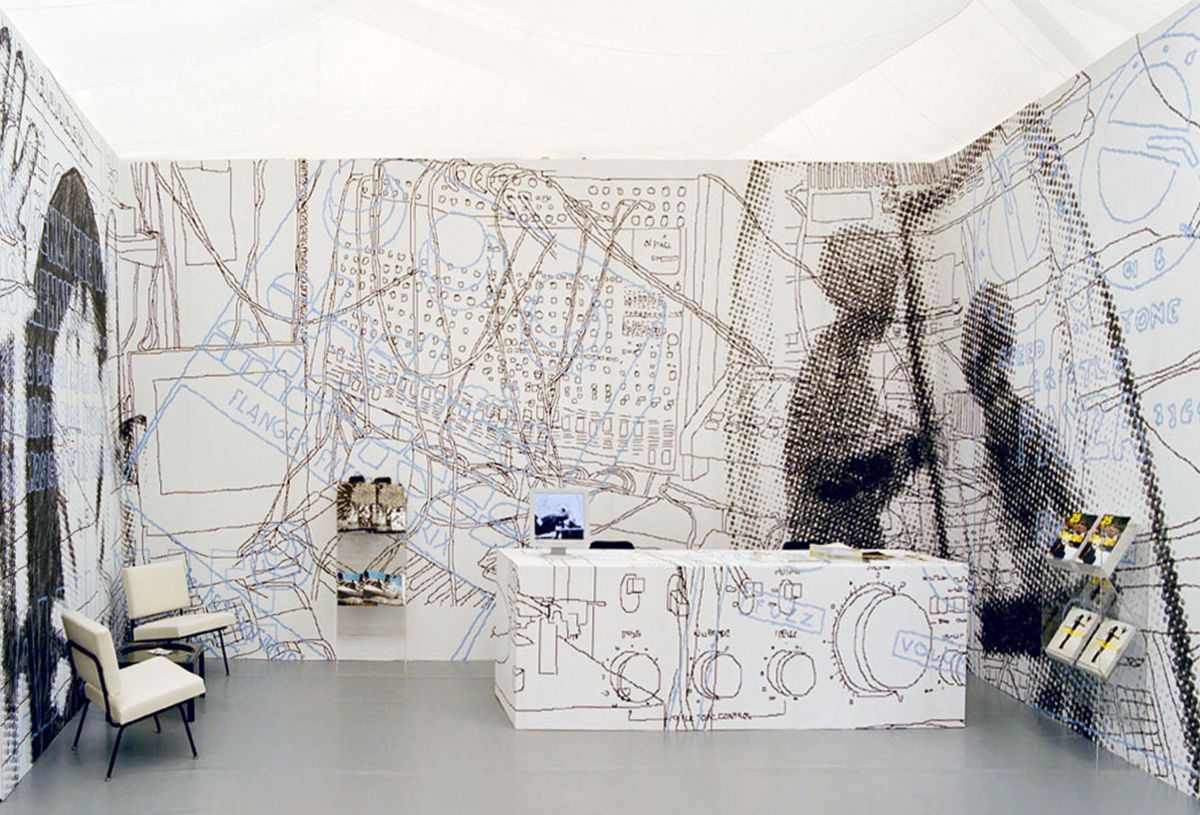

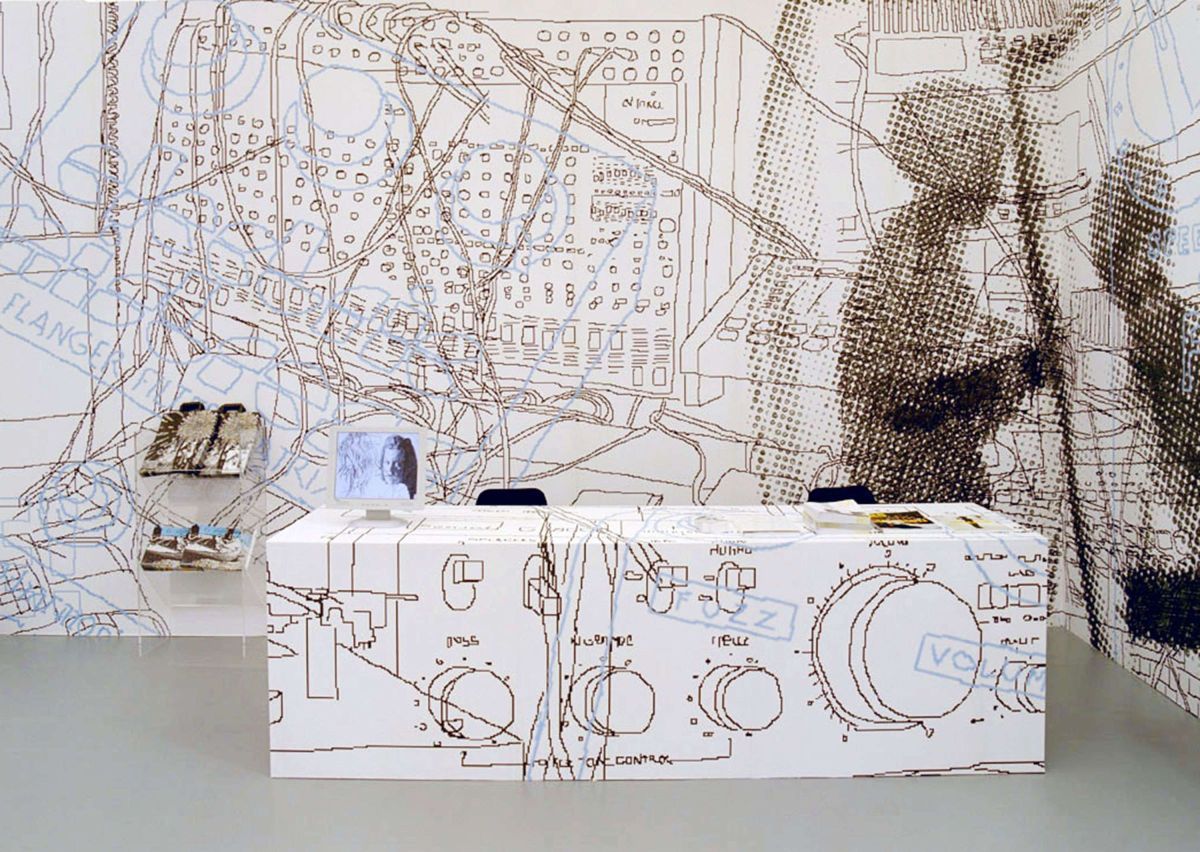
Assemblage de dessins numériques et de dessins au Stylo bille, imprimé sur papier et tapissé sur le mur, 2005
Memories of the Future:
Ursula Döbereiner’s installation Spaces
into Spaces by Oliver Koerner von Gustorf
Space is all one space and thought is all one thought, but my mind divides its spaces into spaces into spaces and thoughts into thoughts into thoughts.
Andy Warhol, From A to B and Back Again, 1975
The space station orbits in almost cheerful tranquillity, imparting an exalted sense of quietude and order. In reference to the sequence of his film 2001: A Space Odyssey, accompanied by Johann Strauss’ waltz On the Beautiful Blue Danube, the director Stanley Kubrick remarked that it was “a kind of machine ballet.” On his trip to the moon, the scientist Dr. Floyd is attended to by a waitress who serves him liquid food. Carrying trays to the pilots’ cockpit, she turns upside-down and seems to be walking along the ceiling. Fixed directions such as “above” and “below” have lost their meaning here; weightlessness renders the conventional vertical alignment of a spaceship’s design superfluous.
Spaces into Spaces is the title of an installation by the Berlin-based artist Ursula Döbereiner. Deutsche Bank Art is presenting itself at this year’s Frieze with Döbereiner’s room-sized work, in which she uses a larger-than-life screened and doubled image of Kubrick’s cosmic waitress. The fair stand resembles a huge drawing that can be entered into, physically confronting the viewer with unaccustomed proportions. Spaces into Spaces combines the personal mark of the hand drawing with lines generated directly on the computer that are enlarged to immense proportions as wallpaper motifs and patterns. A classical component of indoor living, wallpaper is both a drawn construction and a real-life furnishing element. In an allover comprised of reproduced film stills, newspaper images, and internet motifs superimposed with the stylized depiction of amplifiers, cables, and technical instruments, Döbereiner directs her attention to past utopias. It’s not all that long ago that we still had a future – one we could imagine clearly as a place with a form and structure, a style. The future was a world that was clearly designed; it had its own language, its own technology. It was like another country in which people dressed differently, ate, conversed, and thought differently.
Questions concerning current visions of the future combine here with a sideways glance to yesterday’s defunct utopias: when approaching the huge images of Spaces into Spaces, the oversized pixels become visible that make up the lines and zigzags constituting the image – an abstract pattern of large rectangles of varying size reminiscent of the lowtech animations of early computer games like “Pacman.” In her use of digital technology, the artist implements the possibilities of collage via “copy and paste,” whereby the computer serves her in “remixing” her own drawings. By means of this “sampling technique,” Döbereiner’s site-specific works transform the existing situation into memory and production spaces in which personal taste, autobiographical elements, and the artistic investigation of the medium of drawing overlap. In the process, she implements a technology that itself seemed utopian even at the dawn of the digital revolution. While Döbereiner’s installation reflects on the medium of paper, she also investigates the automation of artistic processes. In Spaces into Spaces, effect-generating devices used in music production repeatedly appear, such as the Flanger, the Electric Mistress, and the Phaser, which borrowed its name from the fictional weapon of the Star Trek universe – along with technical equipment from the working space of Wendy Carlos, the electronic musician who composed many of the pioneering soundtracks of Kubrick’s films and science-fiction flicks such as Tron.
The point of departure for Döbereiner’s works derives from a highly concentrated involvement in musical styles, film images, ads, record covers, and pictures from magazines. When the artist listens to music while drawing from the inventory of found images or those she has photographed herself, she immerses herself in a state that is at once hypersensitive and distanced. For her installation Posterbox (2004), drawings of butterflies were blown up on the computer and wallpapered over walls and doors while girlfriends imitate the star poses of an entire issue of Vanity Fair and ballpoint-pen lines and shadings convey psychedelic light reflections and a blurry, music-driven motion. Like Marc Brandenburg and other Berlin-based artists of a young Berlin generation, Döbereiner, who was born in 1963, uses architecture, mass media, and everyday images as a basis for compositions in which the borders between representation and abstraction become blurred. In the process, the recurring pixel structures refer to the computer and thus to the binary code, suggesting the immaterial: things thought, remembered, and imagined. Döbereiner’s work leads us from the specific to the general. While she is not an author, the German weekly newspaper Die Zeit found her book Cars/Films/Women/ Homes/Fashion/Living from 2001 to be the best example of German pop literature in a long time, by which they were referring to the cool attitude Döbereiner’s work imparts. It’s no accident that an image from Godard’s futurist thriller Alphaville appears in Spaces into Spaces: the laconic diction of “hard-boiled” literature, pulp fiction, Nouvelle Vague are all determining influences that are reflected in her artistic production. With the same cold-blooded energy intrinsic to the lone wolves of crime novels, she creates “profiles” of personalities, objects, buildings, photographs, and interiors – drawn and digitally reproduced suppositions based on the available evidence. Döbereiner tells anonymous stories from our time which are both factual and sketchy, just as the personal and collective memories that gave rise to them.
Oliver Koerner von Gustorf
spaces into spaces, 2005
Dessins au stylo, numérique et feutre (sélection)
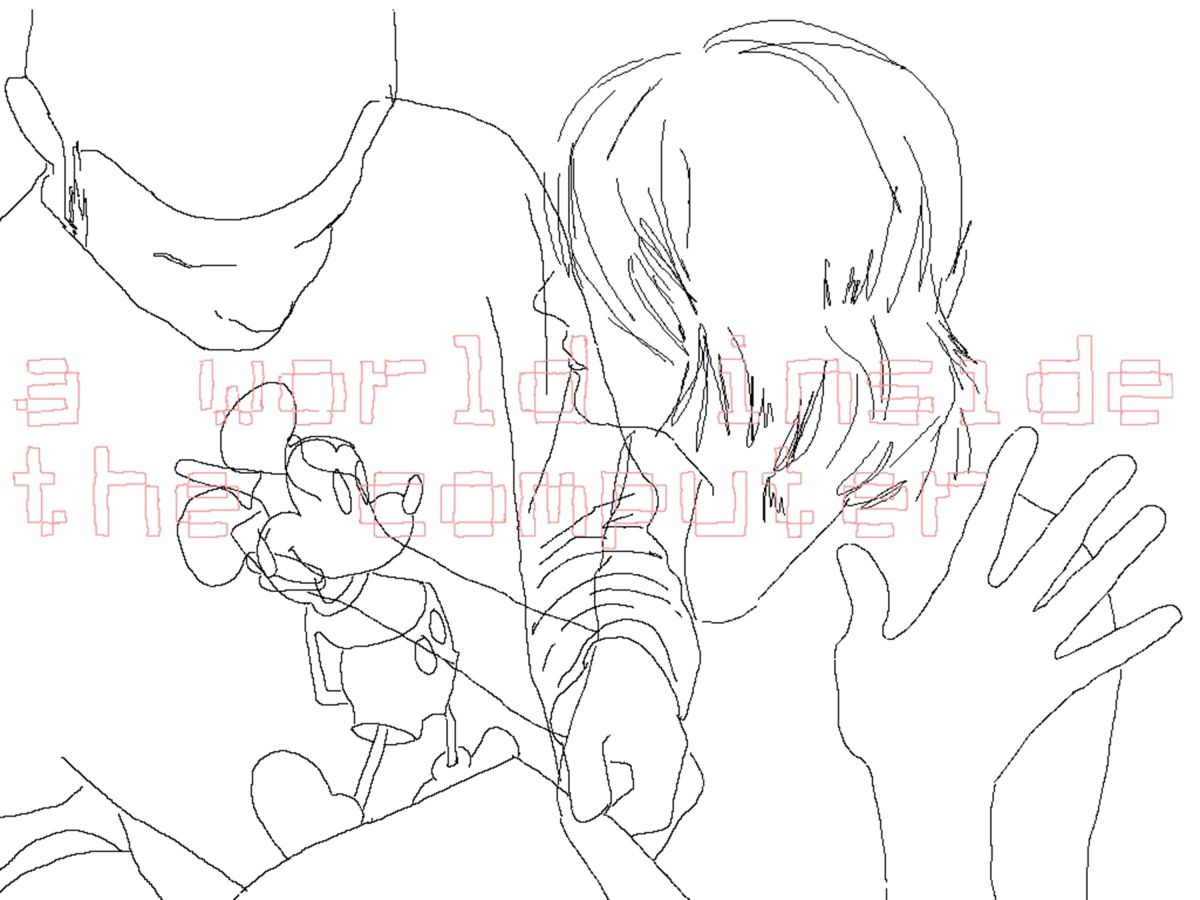
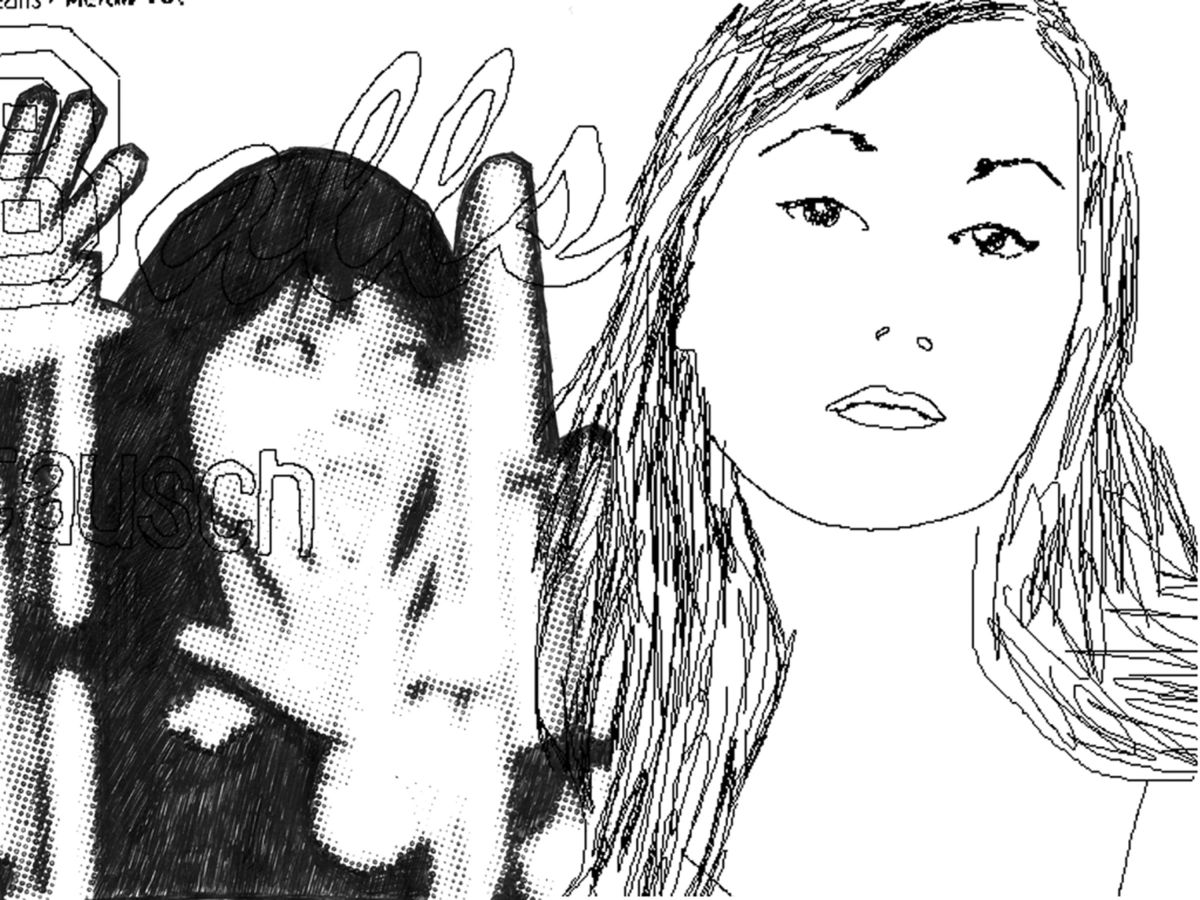

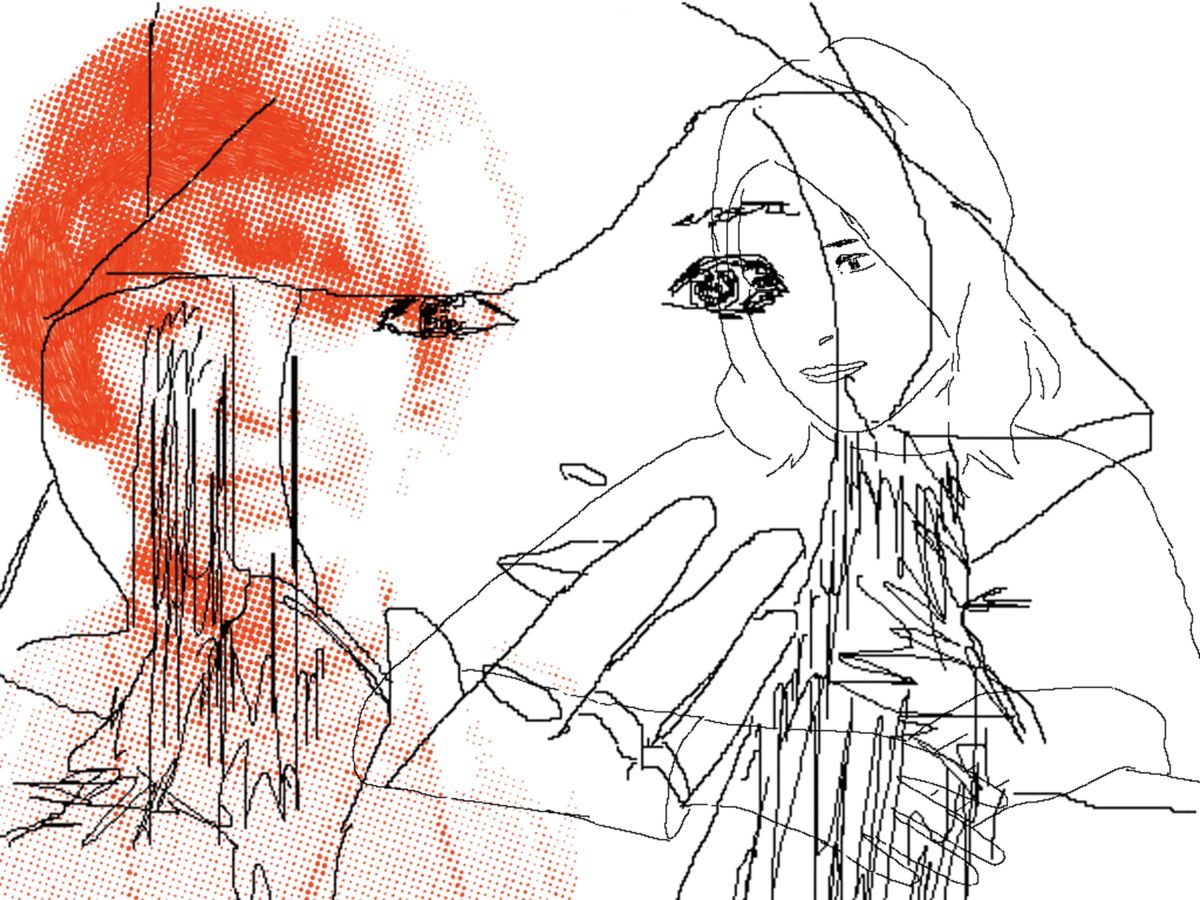

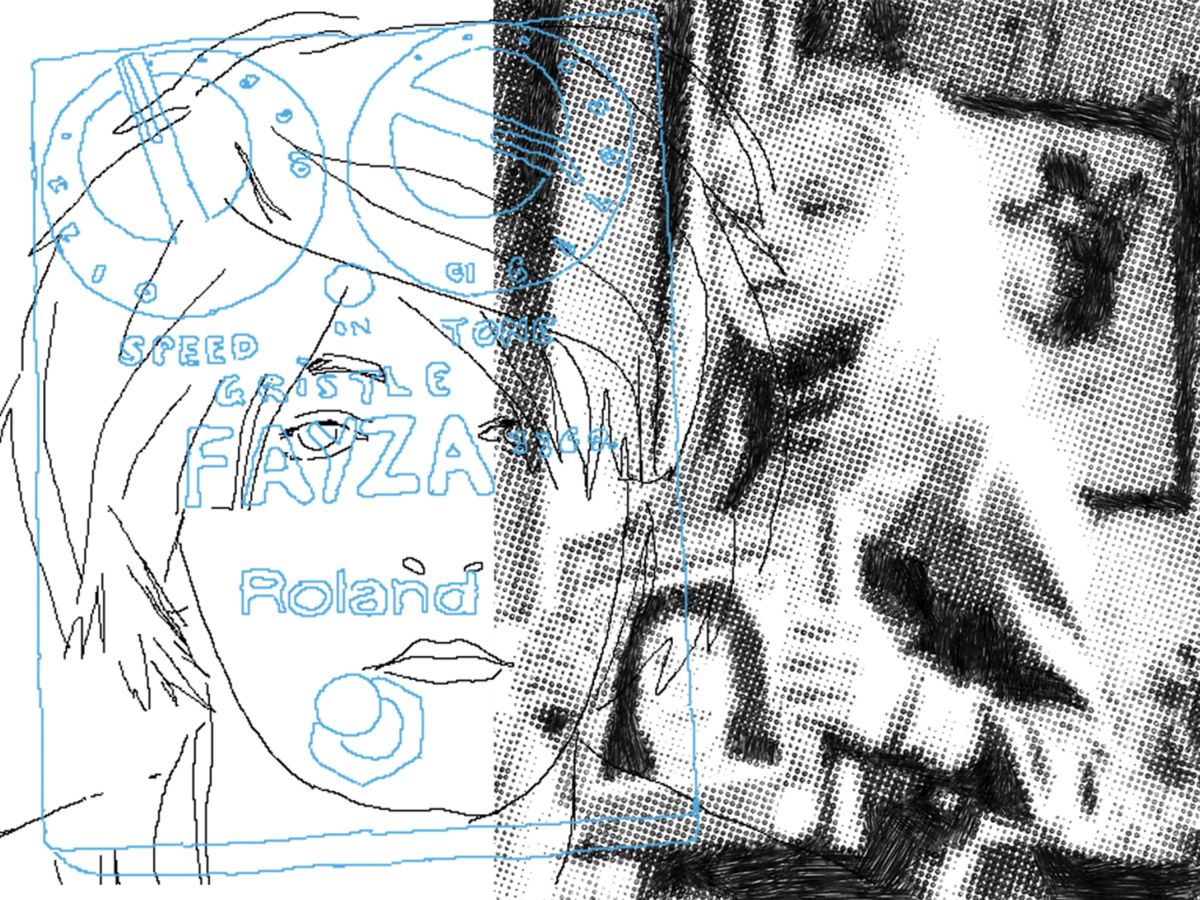

Assemblage de dessins numériques et de dessins au Stylo bille
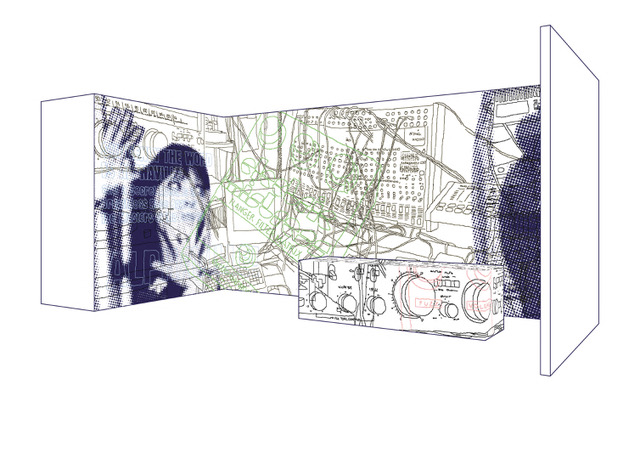
Document préparatoire